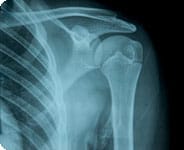Shoulder Chondrolysis Lawsuits Over Pain Pumps
Postarthroscopic glenohumeral chondrolysis, also known as PAGCL, is a relatively new condition which is associated with the deterioration of cartilage in the shoulder following arthroscopic surgery.
Please note that the lawyers at Saiontz & Kirk, P.A. are no longer taking on new cases involving Pain Pumps. The content on this page is provided for informational purposes only.
The devastating condition results in severe pain and permanent shoulder limitations. There are currently no consistently effective treatments for the cartilage damage, and many require shoulder replacement surgery, known as glenohumeral arthroplasty.
The cause of shoulder chondrolysis has been directly linked to the use of intra-articular pain pumps to deliver medication to the shoulder joint following arthroscopic surgery. Compensation may be available through a postarthroscopic glenohumeral chondrolysis lawsuits for individuals who suffered cartilage damage as a result of a shoulder pain management pump used after arthroscopic surgery.
New cases are no longer being accepted by Saiontz & Kirk, P.A. This page is maintained for informational purposes only.
CARTILAGE DAMAGE FOLLOWING ARTHROSCOPIC SURGERY
The shoulder is a unique joint that can move in more ways than any other joint in the body. Without cartilage, the shoulder is unable to move fully, properly or without pain. Therefore, the irreversible destruction of cartilage associated with glenohumeral chrondolysis can have devastating consequences.
Post-arthroscopic glenohumeral chondrolysis was recently first described in medical literature as a condition which may suddenly develop during the months after shoulder arthroscopy. Following several months of expected improvement, those who develop the condition encounter an onset of new pain between three and twelve months after the surgery.
Symptoms of PAGCL could include:
- Stiff shoulder
- Shoulder pain (either when in motion or at rest)
- Clicking shoulder
- Popping shoulder
- Grinding shoulder
- Shoulder weakness
- Decreased shoulder range of motion
Researchers believe that the complaints of new pain associated with PAGCL are delayed for a few months following the arthroscopy because the shoulder is protected and there is not much significant use of the joint post-surgery.
After three months, more aggressive activities and resistance exercises are often increased, resulting in the onset of symptoms caused by the loss of cartilage. While problems have been seen to develop 12 months or more after surgery, most cases appear within three to five months.
PAGCL LAWSUITS
Following arthroscopic shoulder surgery, it is not uncommon for a disposable shoulder pain pump to be put in place to infuse medication directly to the shoulder joint to help manage the pain. Research has confirmed that the use of these disposable infusion pumps are linked to the development of postarthroscopic glenohumeral chondrolysis.
PAGCL lawsuits were being reviewed nationwide for shoulder surgery patients who have developed cartilage damage following arthroscopy. The manufacturers’ failure to warn about this painful and devastating condition has resulted in injuries which could have been prevented.
New cases are no longer being accepted by Saiontz & Kirk, P.A. This page is maintained for informational purposes only.

